Posted by Elena del Valle on January 6, 2021

Because Internet
Photo: Riverhead Books
Ending a text with a period may make the writer seem old while an emoticon at the end of a sentence can add surprising nuance to the statement, according to a book about language published last year. The subtleties of informal written communication are many, says Gretchen McCulloch, a self described internet linguist. She believes modern digital communications are changing language and the way we and society overall communicate for the better. In Because Internet: Understanding the New Rules of Language (Riverhead Books, $26) she explains her views and theories.
Salutations like language in general evolve over time, according to the book. McCulloch explains that for many addressing someone with dear has become dated. At the same time hey, which for older generations is objectionable, has become a common written email greeting. Hi follows in popularity with hello being last and used to address strangers.
The author goes on to say that a generational gap exists; and some users embrace the “expressive capacity” of informal writing while others reject it. The author explains the difference between emoticons, emojis and gifs, pointing out that although there is no universal agreement on their appearance emojis are the best fit for many people communicating electronically. They make it possible for users to better express their mental states in written form, the author says. It’s useful to think of emojis as gestures; already courts have had to address the meaning of emojis such a raised hand, a possible gang sign or a comma, she says.
The 326-page hardcover book published in 2019 is divided into eight chapters: Informal Writing, Language and Society, Internet People, Typographical Tone of Voice, Emoji and Other Internet Gestures, How Conversations Change, Memes and Internet Culture and A New Metaphor. The emojis in the book are from Twemoji, an open source font released under a Creative Commons Attribution.
McCulloch, is based in Montreal, Canada and hosts the podcast Lingthusiasm, according to her bio.
Comments:
Filed Under: Books
Posted by Elena del Valle on October 21, 2020
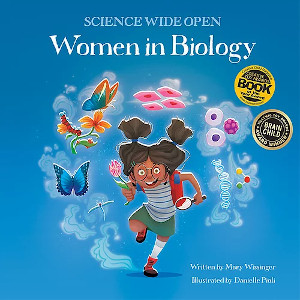
Women in Biology
Photos: Science, Naturally!
Science, Naturally! released Women in Biology (Science Naturally, $9.95), a 40-page paperback for seven to ten year olds published this month. A hardback edition was published in 2016. The eight by eight inch book by Mary Wissinger is also available in a Spanish language edition titled Las mujeres en la biología. The books were illustrated by Danielle Pioli. Both books are available in digital formats.
Featured are Maria Sibylla Merian and Hildegard of Bingen of Germany as well as Jane Cooke Wright, Linda Buck and Barbara McClintock of the United States. There is a glossary at the end.
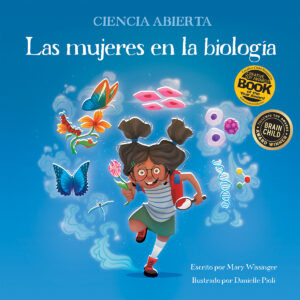
Las mujeres en la biología
The new titles are part of the publisher’s Science Wide Open series of “scientifically accurate children’s books” with a mission to teach young kids about Chemistry, Biology, and Physics, while highlighting some of the achievements of women in those fields. The biology books are the first ones in the series available in paperback and Spanish.
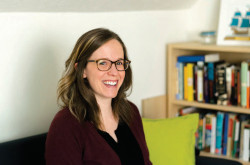
Mary Wissinger, author, Women In Biology
Wissinger was born in Wisconsin where she spent most of her childhood singing, reading, and daydreaming. A former teacher, she can often be found at her standing desk in St. Louis, Missouri, writing stories to inspire “curiosity about the world and connection with others.” She is the author of the entire Science Wide Open Series: Women in Biology, Women in Chemistry, and Women in Physics.
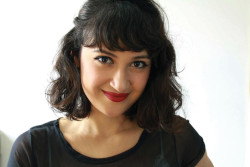
Danielle Pioli, illustrator, Women In Biology
Pioli is an artist and illustrator from Brazil who strives to inspire others to create. She produces art, illustrations, comics, zines, poems, songs, and hypnotherapy sessions. She is the illustrator of the entire Science Wide Open Series.
Science, Naturally! is Washington, D.C.-based independent press “committed to increasing science and math literacy by exploring and demystifying these topics in entertaining and enlightening ways.” The company uses fictional and nonfictional forms, diverse characters, and engaging formats to make intimidating subjects intriguing and accessible.
Comments:
Filed Under: Books
Posted by Elena del Valle on October 13, 2020
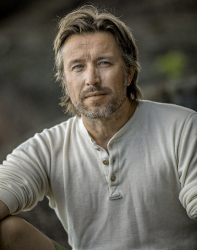
Torbjørn Ekelund, author, In Praise of Paths
Photo: Jørn H.Moen (2017)
A podcast interview with Torbjørn Ekelund, author, In Praise of Paths Walking Through Time and Nature, is available in the Podcast Section of Hispanic Marketing and Public Relations, HispanicMPR.com. During the podcast, he discusses the benefits of walking with Elena del Valle, host of the HispanicMPR.com podcast.
Torbjørn is co-founder of Harvest, an online magazine documenting wilderness adventures, environmental issues, and our relationship with nature. He lives in Oslo, Norway.
To listen to the interview, scroll down and click on the play button below. You can listen to it in the box marked “Podcast” on the right hand side. Select “HMPR Torbjørn Ekelund” and or download the MP3 file to your iPod or MP3 player to listen on the go, in your car or at home. You can also find it on the RSS feed. Some software will not allow flash, which may be necessary for the play button and podcast player. If that is your case, you will need to download the file to play it. To download it, click on the arrow of the recording you wish to copy and save it to disk. The podcast will remain listed in the October 2020 section of the podcast archive.
Posted by Elena del Valle on September 3, 2020
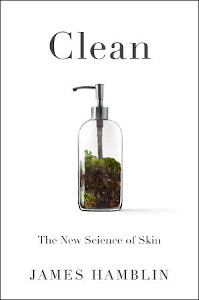
Clean
Photo: Penguin Random House/Riverhead Books
James Hamblin, a former radiology resident at the University of California Los Angeles turned health writer, begins the Prologue of his new book by letting readers know he hasn’t showered in five years. Several researchers and experts he interviewed indicated they too showered infrequently. He wets his hair daily and washes his hands, but he mostly stopped using soap on his body and shampoo, he said in the book. Beyond that there is little more to guide readers on the topic of showers and hygiene (other than a list of references at the end of the book).
In Clean The New Science of Skin (Riverhead Books, $28) he explores the history of soap and discusses beauty and cosmetic products at length, interviews researchers and wraps up with a discussion of toilets and public health. The 280-page hardcover book published this year is divided into: Prologue, Immaculate, Purify, Lather, Glow, Detoxify, Minimize, Volatile, Probiotic, Refresh and Epilogue.
In the Epilogue he points out that one of the most dangerous places to catch an infection is a hospital. Health care providers, he says, spread infections around hospitals. He points to government data indicating that one in every thirty-one patients in hospitals in the United States acquires an infection while at the facility. He suggests that what might make our skin look good is eating and sleeping well, keeping our anxiety under control and spending time in nature.
Based in Brooklyn, New York Hamblin is a staff writer at The Atlantic and a lecturer at the Yale School of Public Health. His first book, If Our Bodies Could Talk, addressed topics such as dimples, tattoos, getting rid of eyelashes, stomach rumbling and how to sit. Although he responded to an initial email he failed to respond to questions as of this writing.

Click to buy Clean
Posted by Elena del Valle on July 30, 2020

The Body A Guide for Occupants
Photo: Doubleday
In The Body A Guide for Occupants (Doubleday, $30) Bill Bryson, an American writer (born in Des Moines, Iowa) living in England, explores the human body. The 450-page hardcover book was published in 2019. Using some lesser known and unexpected tidbits he entertains readers with a curious and light exploration of some aspects of the human body, dispensing with gory descriptions. Often his discussion includes history and historic figures or quotes from authors, researchers and academics.
For example, in the chapter on Nerves and Pain he quotes Patrick Wall as a leading British neuroscientist and author of Pain: The Science of Suffering; and Oliver Sacks, who in a book on migraines described almost one hundred types of migraines. In The Outside: Skin and Hair chapter he quotes Peter Stark in Last Breath: Cautionary Tales from the Limits of Human Endurance, saying that a man who weighs 155 pounds has about 42 quarts of water in his body; and he will lose one and a half quarts of water a day via urination, sweat and respiration.
The hardcover book is divided into 23 chapters: How to Build a Human; The Outside: Skin and Hair; Microbial You; The Brain; The Head; Down the Hatch: The Mouth and Throat; The Heart and Blood; The Chemistry Department; In the Dissecting Room: The Skeleton; On the Move: Bipedalism and Exercise; Equilibrium; The Immune System; Deep Breath: The Lungs and Breathing; Food, Glorious Food; The Guts; Sleep; Into the Nether Regions; In the Beginning: Conception and Birth; Nerves and Pain; When Things Go Wrong: Diseases; When Things Go Very Wrong: Cancer; Medicine Good and Bad; and The End.
Bryson is author of 19 other books, including A Walk in the Woods, The Life and Times of the Thunderbolt Kid, and A Short History of Nearly Everything. He was chancellor of Durham University, England’s third oldest university, from 2005 to 2011, and is an honorary fellow of Britain’s Royal Society.
According to his FaceBook page he met his wife in England, where they settled; he wrote for The Times and The Independent before moving back to the United States with his wife and four children. He and his family moved back to England in 2003.
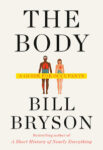
Click to buy The Body: A Guide for Occupants
Posted by Elena del Valle on July 6, 2020
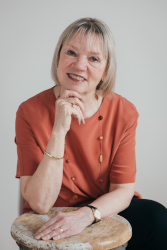
Susan J. Douglas, author, In Our Prime
Photo: H. Nash
A podcast interview with Author Susan J. Douglas is available in the Podcast Section of Hispanic Marketing and Public Relations, HispanicMPR.com. We will discuss her new book In Our Prime: How Older Women are Reinventing the Road Ahead (W.W. Norton and Company, $25.95).
Susan is the Catherine Neafie Kellogg Professor and Arthur F. Thurnau professor of Communication and Media at The University of Michigan. In Our Prime was recommended as an “Editors’ Choice/Staff Picks” by The New York Times and hailed by the Associated Press as a “masterful takedown of gendered ageism.” She is author of Celebrity: A History of Fame, The Rise of Enlightened Sexism: How Pop Culture Took us from Girl Power to Girls Gone Wild; The Mommy Myth: The Idealization of Motherhood and How it Undermines Women with Meredith Michaels; Listening In: Radio and the American Imagination, which won the Hacker Prize in 2000 for the best popular book about technology and culture; Where The Girls Are: Growing Up Female with the Mass Media; and Inventing American Broadcasting, 1899-1922.
To listen to the interview, scroll down and click on the play button below or locate the “Podcast” section on the right hand side, then choose “HMPR Susan J. Douglas” or download the MP3 file to your iPod or MP3 player to listen on the go, in your car or at home from the RSS feed. Some software will not allow flash, which may be necessary for the podcast player. If that is your case, you will need to download the file to play it. To download it, click on the arrow of the recording you wish to copy and save it to disk. The podcast will remain listed in the July 2020 section of the podcast archive.
Click to buy In Our Prime
Posted by Elena del Valle on June 8, 2020
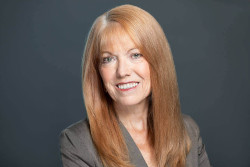
Engelina Jaspers, author, Marketing Flexology
Photo: Curtis Myers
A podcast interview with Engelina Jaspers, author, Marketing Flexology (Flex Pro Media, $26), about the need for marketing agility is available in the Podcast Section of Hispanic Marketing and Public Relations, HispanicMPR.com.
Over a rewarding 30-year corporate career, Engelina experienced revolving-door CEOs, business course-corrections and lots of reinventions. After leading multiple company wide transformations, she learned what separates the career winners from the career losers during change and transformation. She shares what she’s learned through customized workshops, presentations, consulting engagements and her book.
To listen to the interview, scroll down and click on the play button below or locate the “Podcast” section on the right hand side, then choose “HMPR Engelina Jaspers” or download the MP3 file to your iPod or MP3 player to listen on the go, in your car or at home from the RSS feed. Some software will not allow flash, which may be necessary for the podcast player. If that is your case, you will need to download the file to play it. To download it, click on the arrow of the recording you wish to copy and save it to disk. The podcast will remain listed in the June 2020 section of the podcast archive.
Click to buy Marketing Flexology
Posted by Elena del Valle on April 27, 2020
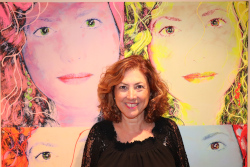
Hilary Topper, author, Branding in a Digital World
Photo: HJMT Public Relations
A podcast interview with author Hilary Topper is available in the Podcast Section of Hispanic Marketing and Public Relations, HispanicMPR.com. During the podcast, she discusses her book Branding in a Digital World with Elena del Valle, host of the HispanicMPR.com podcast.
Since 1992 Hilary has been the chief executive officer of HJMT Public Relations. She is also adjunct professor at Hofstra University, where she teaches digital communication, public relations tools, and persuasive presentation for undergraduate and graduate students.
Since 2011 she is the host of a weekly podcast (Hilary Topper On Air) and chief curator of HJMT Media Company, LLC, where she writes for two blogs, NYLifestyleBlog.com and ATriathletesDiary.com. According to her biography her blogs receive more than 50,000 unique visitors a month.
She wrote Branding in a Digital World to offer small business owners information on how to grow their businesses through digital media. Her first book, Everything You Ever Wanted to Know About Social Media, but were afraid to ask… was published in 2009.
To listen to the interview, scroll down and click on the play button below or locate the “Podcast” section on the right hand side, then choose “HMPR Hilary Topper” or download the MP3 file to your iPod or MP3 player to listen on the go, in your car or at home from the RSS feed. Some software will not allow flash, which may be necessary for the podcast player. If that is your case, you will need to download the file to play it. To download it, click on the arrow of the recording you wish to copy and save it to disk. The podcast will remain listed in the April 2020 section of the podcast archive.

Click to buy Branding in a Digital World
Posted by Elena del Valle on April 22, 2020
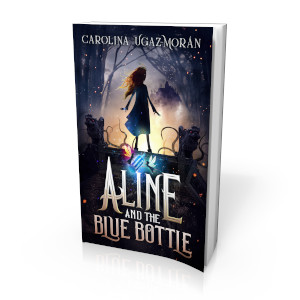
Aline and the Blue Bottle
Photos: Damonza (book cover), Farshad Khoshroo (author photo)
Carolina Ugaz-Moran, a native of Spain raised in South America and the United States with degrees in biochemistry and creative writing from the University of Wisconsin, spent ten months spread over 15 years writing Aline and the Blue Bottle, her first book. The 303-page softcover book published in 2019 includes Spanish and Quechua words, a map at the beginning as well as a page of Spells and a glossary at the end. Her target audience? Children eight to twelve years old and older.
“The cover depicts Aline standing on the House of Haunted Gargoyles facing her future, a magical floating castle with mysterious creatures flying around,” the author said by email when asked about the cover art. “She is at the entrance of a forest, with vines that surround her and behind her are her two loyal and close magical friends carrying the blue bottle. The cover also holds secrets (just like within the book).”
She went on to explain, “The title highlights Aline, her adventure, and her first quest to find the blue bottle and save many worlds. It also shows strength, courage,passion, and empowerment – in this case for a girl, depicting mysteries and magic which Aline and her friends will have to face together.”
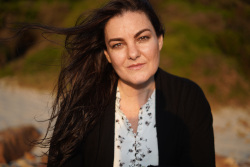
Carolina Ugaz-Moran, author, Aline and the Blue Bottle
When asked why she included Quechua she said, “I think the more exposed we are to languages as children, the more neurons we connect and the better we can develop the ability to become multilingual, so why not add Quechua and Spanish! But for me, it is more than learning a new language, it is about understanding a culture and exposing oneself to the abundance fountain of knowledge that each language provides.
Also, a few years ago, I found out that even though several people can speak Quechua (8-10 million people) very few people can actually read and write it due to the lack of printed material in Quechua. There have been efforts from the Peruvian, Ecuadorian, and Bolivian governments to introduce the language as an intercultural bilingual education; however, some indigenous people in each of these countries are having their children study in Spanish for the purpose of social and economical advancement. I thought I tried to help out a little plus I can learn on the way. Fun fact: there are about 45 varieties of Quechua which are all classified as separate languages and in addition, there are several dialects.”
When asked if her biochemistry studies help her or play a role in the project she said, “Yes, as well as my love for science and nature. This can be seen in several places. The chimera twins. They are powerful sylph sisters who have an important role in the book series. A chimera is a single organism that contains two sets of DNA with the code to make two separate organism. Simply put, it is an organism made up of cells from two or more different individuals.
The explanation of magic and how it flows, it somewhat reflects the states of energy as well as the law of conservation of energy. The blue and red stars and how from earth, the cooler stars appear red, and the high temperature stars appear blue. The symbiotic relationship between sharks and remora fish, I am an animal lover and I am looking for ways for people to admire and be kind to even the scariest of animals.”
She is working on the second book in the Aline series. It will be called Aline and the Kron Queen.
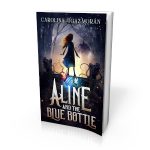
Click to buy Aline and the Blue Bottle
Comments:
Filed Under: Books
Posted by Elena del Valle on April 1, 2020

Latino Orlando
Photos: Simone Delerme
Simone Pierre Delerme, Ph.D. is McMullan associate professor, University of Mississippi’s Center for the Study of Southern Culture and Department of Sociology and Anthropology. Targeting college students, educators, policy makers, and others interested in migration experiences she wrote Latino Orlando Suburban Transformation and Racial Conflict (University of Florida Press, $80), a 181-page hardcover book mainly about Puerto Ricans in the Orlando area published this year.
“The intended academic audience includes undergraduate students and scholars in the disciplines of Anthropology, Sociology, Latino Studies, American Studies, Southern Studies, and Florida Studies,” she said by email. “The book is concise and intentionally written in simple enough language to be adopted by introductory undergraduate courses in all of these disciplines, but the engagement with critical race theory will appeal to more theoretically driven, advanced audiences.”
The most significant finding or takeaway from the book? “Latino migrants are complicating racial categorizations and challenging the deep-rooted black-white binary that has long prevailed in the American South. Language and the changing soundscape became a way of racializing and segregating Latino communities, leading to the growth of suburban ethnic enclaves,” she said.
“The research was conducted in the counties that are referred to as Greater Orlando or the Orlando Metropolitan Statistical Area,” she said when asked about the title. “Therefore, I wanted to include the term ‘Orlando’ in the title so audiences knew the part of the south that I focus on. The population I focus on is primarily Puerto Rican, but does include the voices of other Latinos. Therefore, the term ‘Latino’ was more inclusive and representative of the population documented in the book.”
The book features Introduction: New Destinations; Buenaventura Lakes; Latinization, Landscapes, and Soundscapes; The Fractured American Dream; Social Class Distinctions and the Latino Elite; The Encargado System; and Conclusion. The first three chapters focus mainly on Puerto Ricans and a Puerto Rican concentrated residential and commercial enclave, the author said. The next two chapters, about Latinos involved in business networking organizations and the Encargado System, features Cuban, Colombian, Guatemalan, Venezuelan, and Mexican perspectives.
When asked about the term Latino or Hispanic she said, “In the book, I use the terms Latino and Hispanic interchangeably, although there is a difference. Most of my informants and interviewees preferred to be identified as ‘Mexican,’ ‘Venezuelan,’ or ‘Colombian,’ for example. When they did use one of the umbrella ethnic terms, the preference was actually Hispanic, not Latino. It really depended on the individual’s preferences though, which is why I use both terms. I try to use the language that my interviewees and informants use to describe themselves. The term Puerto Rican is also tricky because those from the diaspora are sometimes identified and perceived as Nuyorican, and there is a distinction made between those from the island of Puerto Rico and those that were born and raised in New York City, for example. I use the term Puerto Rican if my interviewees and informants identified that way. Usually those who were born on the island of Puerto Rico or have family from Puerto Rico identified as Puerto Rican.”
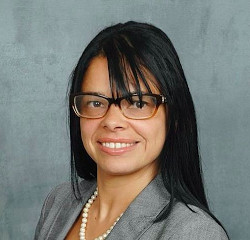
Simone Delerme, author, Latino Orlando
“The term Hispanic, which the United States Census Bureau created in the 1970s, refers to all people in the United States whose ancestry is from one or more Spanish-speaking countries,” she said to explain how she distinguished Hispanic from Latino in the book. “The term thus emphasizes language, not geographic origin, as the identifying factor. The term Latino, which originated within the community, instead focuses on geography and is ‘an attempt to embrace all Latin American nationalities, including those which neither have ties to Spain nor are necessarily Spanish-dominant groups,’ such as Brazilians and various indigenous groups living in Latin America.”
Delerme specializes in migration to the United States South, with interests in race relations, integration and incorporation, community development, and social class inequalities. The book cover is based on a photograph Delerme took of a house in the Buenaventura Lakes suburb that had an American flag and Puerto Rican flag flying in the front lawn. She is conducting fieldwork for a second book, International Memphis: Migration and Transformation in the Mid-South. She is researching “how migrants are being incorporated into the social, political, and economic life of Memphis, Tennessee, a city with a history of segregation and a historic black-white racial binary.”
From idea to publication the project required 10 years. She received an in-residence fellowship from the Center for Puerto Rican Studies at City University of New York (CUNY) Hunter College after she completed her data collection. She is also Truman Scholar, which includes a financial award, which facilitated the fieldwork and data collection for the book. None of the informants or interviewees mentioned in the book was compensated financially, she said.
The book is part of the Southern Dissent series, which seeks to explore and analyze the role of dissent in the south, and document the experiences of dissenting groups during different time periods and in different places.
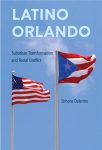
Click to buy Latino Orlando
Comments:
Filed Under: Books






























